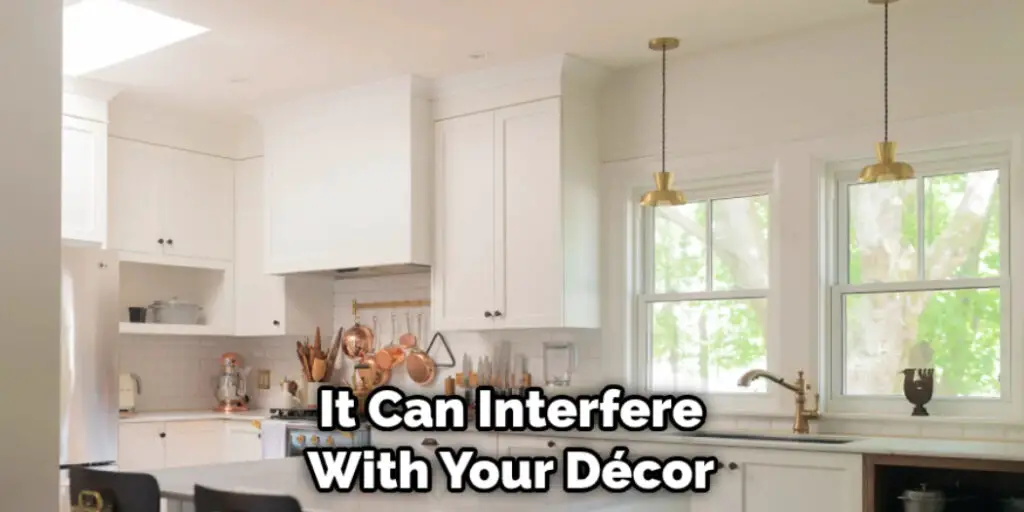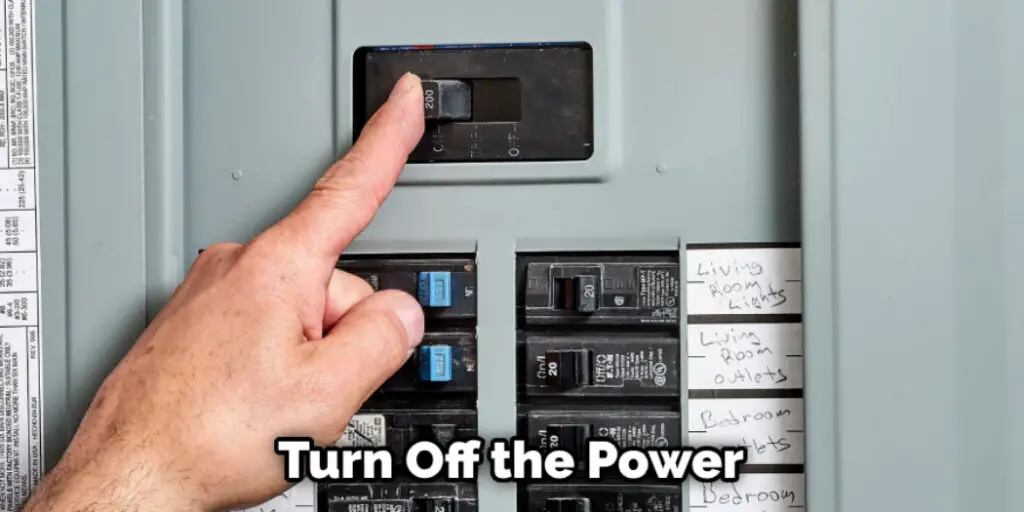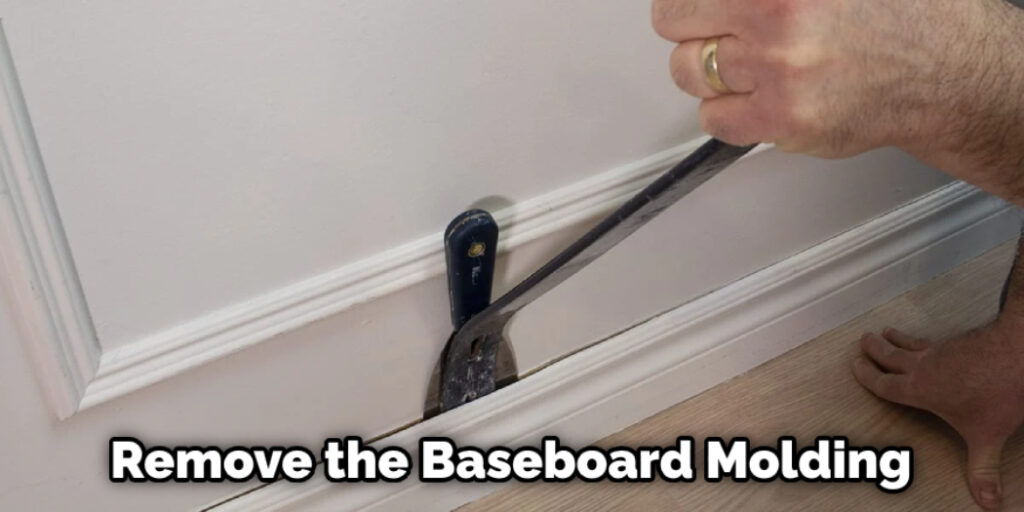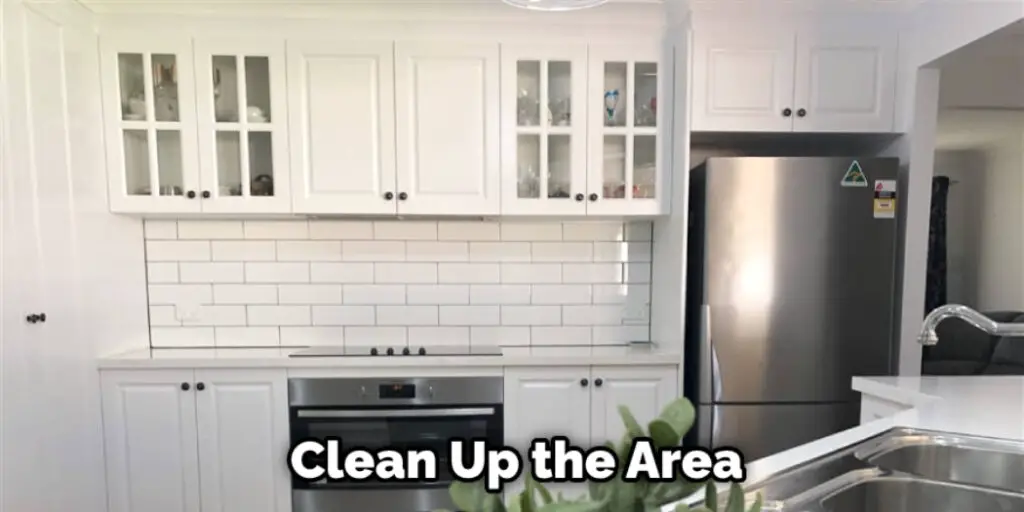A soffit is a panel that is installed below the roof level to hide the roof framing and insulation. It is usually made out of plywood, but it can also be made out of different materials, such as metal or plastic. Many people choose to remove the kitchen soffit because it takes up a lot of space and makes the kitchen look cluttered. This article will show you how to remove kitchen soffit quickly and easily. Keep reading to learn more.

What is a Kitchen Soffit?
A kitchen soffit is usually installed to hide wiring, ventilation and plumbing pipes, or ductwork. It can also be used to create a seamless transition between cabinets and the ceiling. Soffits are common in older homes but have become less popular in modern kitchens. Removing a kitchen soffit can open up the space and give your kitchen a more modern and spacious look.
You may also want to remove your kitchen soffit if it is damaged or outdated. Soffits can accumulate grease and grime over time, making them difficult to clean. If you are planning a kitchen renovation, removing the soffit can give you more options for cabinet placement and design.
Why Should You Remove Kitchen Soffit?
As mentioned before, removing the kitchen soffit can make your kitchen look more modern and spacious. It can also give you more storage and design options. Here are some specific reasons why you should consider removing your kitchen soffit:
Create the Illusion of a Higher Ceiling:
A lower soffit can make a room feel smaller and more cramped. Removing it allows the eye to travel all the way up to the ceiling, creating an illusion of a higher ceiling and more space.
More Cabinet Space:
Kitchen soffits can take up valuable space that could be used for additional cabinets or open shelving. Removing them can give you extra storage options for your kitchen essentials.
Better Lighting:
Soffits can block natural light from entering your kitchen, making it feel darker and more closed off. Removing them can allow for more natural light to brighten up your space.
Modern Look:
Older homes often have outdated soffits that can make the kitchen look old-fashioned. Removing them can instantly update the look of your kitchen and give it a more modern and sleek appearance.

Materials Needed
To remove a kitchen soffit, you will need the following materials:
Protective Gear (Safety Glasses, Gloves, Dust Mask):
Safety should always be your top priority when doing any home improvement project. Make sure to wear protective gear, especially when working with power tools.
Ladder or Step Stool:
You will need a ladder or step stool to reach the soffit if it is located above eye level.
Screwdriver:
A screwdriver will be used to remove any screws or nails holding the soffit in place.
Pry Bar:
A pry bar will help you to remove the soffit from the ceiling and cabinets.
Utility Knife:
You may need a utility knife to cut through any caulking or adhesive used to secure the soffit.
Hammer:
A hammer may be necessary to help remove stubborn nails or screws.
What Causes Kitchen Soffit to be Installed?

There are a few different reasons why a kitchen soffit might be installed. One reason is to provide support for the cabinets. If the cabinets are not properly supported, they can sag and cause the doors to rub against each other. Another reason for installing a soffit is to hide the ductwork or plumbing that is located in the kitchen. This can give the kitchen a neater appearance.
Additionally, soffits can be used to provide ventilation for the kitchen. The kitchen can become stuffy and uncomfortable if there is not enough ventilation. The other reason why kitchen soffits are installed is to provide a place to install recessed lighting. This type of lighting can be used to highlight the countertops or other areas of the kitchen. Finally, soffits can also be used to hide any unsightly wires that are located in the kitchen.
Step by Step How to Remove Kitchen Soffit:
1. Turn Off the Power
The first step is to turn off the power to the kitchen. This will prevent you from being electrocuted while you are working. Next, locate the circuit breaker box and flip the switch for the kitchen. If you are unsure which switch controls the kitchen, you can turn off the power throughout the house. Avoid using any electrical appliances in the kitchen while you are working.
You should also unplug any appliances that are located near the soffit, such as a refrigerator or microwave. It is important to ensure that there are no electrical hazards while you are working.
2. Remove the Recessed Lighting Fixtures
If you have recessed lighting in your kitchen, you must remove the fixtures before removing the soffit. This is because the soffit will be the way when you try to remove the fixtures. To remove the fixtures, first, remove the lightbulbs. Next, use a screwdriver to remove the trim ring that is around the fixture. Finally, a wire cutter is used to cut the wires that connect the fixture to the electrical box.
The recessed lighting fixtures can be attached to the electrical box in different ways, so make sure to pay attention to how it is connected before removing it.
3. Unscrew the Soffit Vent
The next step is to remove the soffit vent. This small opening is located at the bottom of the soffit. First, locate the screws that are holding the soffit vent in place. There are usually two screws, one on each side of the vent. Next, use a screwdriver to remove the screws. Finally, pull the soffit vent away from the soffit. If the vent is difficult to remove, you can use a putty knife to help pry it loose.
It is important to remove the vent carefully so that you do not damage it. You may need to reuse it if you plan on installing recessed lighting in the future.
4. Cut the Caulk Around the Soffit

Once the soffit vent has been removed, you will need to cut the caulk around the soffit’s edge. This will help to loosen the soffit. To do this, first, use a utility knife to score the caulk. Next, use your fingers or a putty knife to peel the caulk away from the soffit. If the caulk is difficult to remove, you can use a heat gun to soften it.
You may also need to cut through any adhesive that was used to secure the soffit to the ceiling and cabinets. Use a utility knife or putty knife for this step.
5. Pry Off the Baseboard Molding
The next step is to remove the baseboard molding. This molding is located at the bottom of the soffit. First, locate the nails holding it in place to remove the molding. Then, use a pry bar to remove the molding. If the molding is difficult to remove, you can use a hammer to tap the pry bar gently. Avoid hitting the molding too hard, as this can damage it.
You may also need to remove any crown molding that is located near the soffit. Follow the same steps you did to remove the baseboard molding.
6. Remove the Screws Holding the Soffit in Place
The next step is to remove the screws that are holding the soffit in place. These screws are located at the top of the soffit and are usually hidden behind a small strip of wood trim. Use a drill to remove the screws, and then carefully pull the soffit away from the wall. If the soffit is stubborn, you may need to use a putty knife to pry it loose.
But be careful not to damage the ceiling or cabinets while prying off the soffit.
7. Pull Down the Soffit
Once the screws have been removed, you should be able to pull the soffit down from the ceiling. Be careful when doing this, as the soffit may be fragile and could break easily. First, remove any wires or pipes that may be attached to the soffit. Then, gently pull the soffit away from the ceiling until it is completely detached. If the soffit is difficult to remove, you may need to use a pry bar or a putty knife to loosen it. Avoid using too much force, as this could damage the soffit.
You now have successfully removed the kitchen soffit! Make sure to clean up any debris and repair any damage that may have been caused during the removal process.
8. Remove Any Nails or Staples
Once the soffit has been removed, you will need to remove any nails or staples that are still attached to it. You will need a pair of pliers and a hammer to do this. First, use the pliers to remove any nails that are sticking out of the soffit. Then, use the hammer to remove any staples that are still attached to the soffit. If the nails or staples are difficult to remove, you can use a heat gun to soften them.
It is important to remove all the nails and staples, as they can cause damage if left behind.
9. Dispose of the Soffit
Once all of the nails and staples have been removed, you can dispose of the soffit. The soffit is not recyclable, so you must throw it away. You can use a saw to cut the soffit into smaller pieces, making it easier to carry to the dumpster. First, cut the soffit into strips. Then, cut the strips into smaller pieces. Finally, dispose of the soffit in a dumpster or trash can.
You have now successfully removed your kitchen soffit and can move on to the next step of your renovation project. Remember to always take safety precautions and follow proper removal techniques for a successful and efficient process.
10. Clean Up the Area

Once the soffit has been removed, you will need to clean up the area. First, use a vacuum to remove any dust or debris in the area. Then, use a damp cloth to remove any remaining residue. If the area is still dirty, you can use a mild detergent to clean it. Finally, dry the area with a towel or a hairdryer.
The area should now be clean and ready for the next step of your renovation project. Whether you are installing recessed lighting, adding more storage space, or simply changing the look of your kitchen, removing the soffit is an important first step in the process. So, make sure to follow these steps carefully and consult a professional if necessary.
Tips and Warnings on How to Remove Kitchen Soffit:
Tips:
1. Always use a utility knife to score the seams where the soffit meets the cabinets.
2. Use a putty knife or pry bar to remove the soffit from the cabinets gently.
3. Be careful not to damage the cabinets when removing the soffit.
4. If the soffit is glued or nailed to the cabinets, use a hammer or screwdriver to remove it.
5. Use sandpaper to smooth out any rough edges left behind after removing the soffit.
Warnings:
1. Do not try to remove the soffit without scoring the seams first. This can damage the cabinets.
2. Do not use too much force when removing the soffit. This can also damage the cabinets.
3. Be careful not to drop anything on the cabinets when removing the soffit. This can cause scratches or dents.
4. Use caution when using a utility knife. Always cut away from yourself and never towards yourself.
Frequently Asked Questions:
Q: Do I Need Any Special Tools to Remove a Kitchen Soffit?
A: You may need a drill, utility knife, pry bar, screwdriver, pliers, hammer, and saw, depending on the construction of your soffit. It is best to have these tools on hand before starting the removal process. But if you are unsure, consult a professional. You can also rent tools from a local hardware store if needed. That way, you won’t have to purchase them for a one-time use.
Q: Can I Remove the Soffit Myself?
A: Removing a kitchen soffit can be a challenging and time-consuming task. If you have experience with construction projects and feel confident in your abilities, then it may be possible to remove the soffit yourself. However, it is always recommended to consult a professional for safety reasons and to ensure the project is done correctly.
Q: How Long Does It Take to Remove a Kitchen Soffit?
A: The time it takes to remove a kitchen soffit can vary depending on the size and construction of the soffit. On average, it can take anywhere from 2-4 hours for one person to remove a standard-sized kitchen soffit. If the soffit is larger or more complex, it may take longer. It is best to set aside a full day for this project to ensure you have enough time and don’t rush the process.
Q: Will Removing My Kitchen Soffit Damage My Cabinets?
A: If done correctly, removing a kitchen soffit should not damage your cabinets. However, it is essential to take caution and use the proper tools to avoid causing any damage. If you are unsure of how to remove the soffit without damaging your cabinets, it is best to consult a professional for assistance. You can also cover your cabinets with protective materials while removing the soffit for added precaution.
Q: What Should I Do with the Space After Removing My Kitchen Soffit?
A: The options for utilizing the newly opened space after removing a kitchen soffit are endless. Some popular options include installing new cabinets, adding shelves for storage, creating an open shelf or bar area, or even expanding the size of your kitchen by incorporating the space into the rest of the room. It is best to have a plan in mind before removing the soffit to ensure you make the most out of the newly opened space.
Q: Is It Necessary to Remove the Soffit in My Kitchen?
A: In some cases, removing a kitchen soffit may not be necessary. If the soffit is not obstructing or causing any issues, it can be left as is. However, if you want to change the layout or design of your kitchen, removing the soffit can open up more possibilities. It is best to consult a professional for their opinion on whether or not the soffit needs to be removed in your specific situation.
Overall, removing a kitchen soffit can be a rewarding and satisfying project if done correctly. With the right tools, precautions, and plan in mind, you can transform your kitchen into a more open and spacious area. So go ahead and confidently remove that outdated or unnecessary soffit to give your kitchen a fresh new look!
Conclusion
Now that you know how to remove kitchen soffit, you can start the process of removing it from your own kitchen. Remember to use caution and go slowly to avoid damaging the cabinets. With a little patience, you can remove the soffit without any problems. If you have any questions, be sure to ask a professional for help. They will be able to guide you through the process and answer any questions that you may have.
You Can Check It Out To How to Clean Pit Boss Grill Grates
Professional Focus
Angela Ervin, a former interior designer turned blogger, specializes in kitchen design and renovations. Through her website, she blends her passion for cooking with design expertise, sharing practical and creative ideas. Known for balancing functionality and beauty, Angela’s insightful content has made her a trusted voice in home design and lifestyle.
About the Author
Angela Ervin, an experienced interior designer and blogger, combines her passion for kitchen renovations with storytelling. Living in Petersburg with her family, she enjoys cooking and testing her projects firsthand. Known for her humor and relatable style, Angela shares creative, functional design insights through her content, making her a trusted voice in home design.
Education History
University: Virginia Commonwealth University
Degree: Bachelor of Fine Arts (BFA) in Interior Design
- Angela’s education at VCU focused on mastering core interior design principles, including spatial planning, color theory, materials selection, and sustainable design practices.
- She gained hands-on experience through studio projects and collaborative design exercises, which honed her ability to create functional and aesthetically pleasing environments.
- Her coursework also emphasized problem-solving and practical applications of design, preparing her for real-world projects like her self-directed kitchen renovations.
- The program’s strong foundation in both technical skills and creative expression shaped Angela’s ability to seamlessly integrate form and function in her work.


